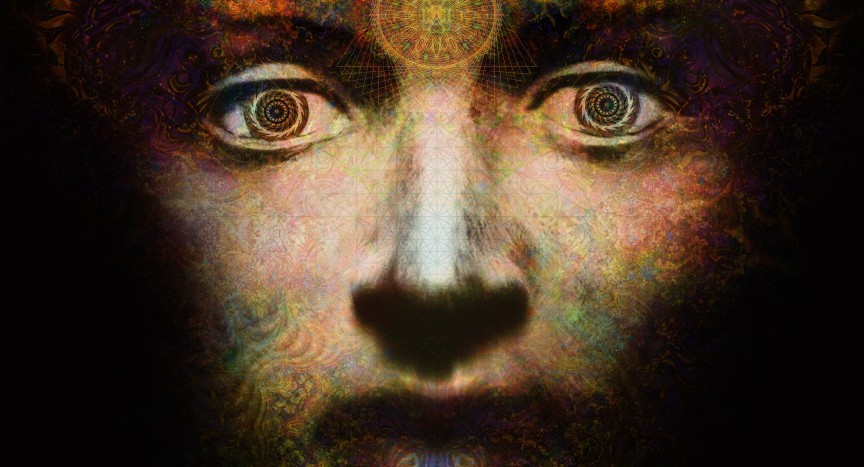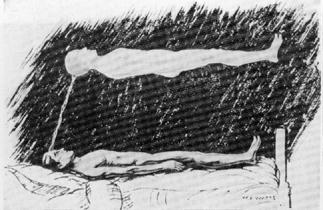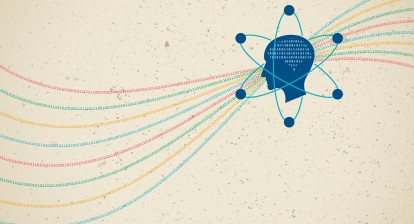As psychedelic research makes headlines in premier medical journals and mainstream media across the globe, it is clear that a psychedelic renaissance is in full swing. This rapidly reemerging field of research brings with it countless unanswered questions, not only surrounding the psychedelic compounds themselves but also regarding previously unexplained and extraordinary human experiences. One research study seeking to answer these questions was published in Frontiers in Psychology titled “An Encounter with the Other: A Thematic and Content Analysis of DMT Experiences from a Naturalistic Field Study” by researchers Pascal Michael, David Luke, and Oliver Robinson of the University of Greenwich and the Imperial College London. N,N-dimethyltryptamine (DMT) is an endogenous serotonergic psychedelic capable of producing radical shifts in conscious experience. The study aimed to analyze qualitative experiential data from DMT breakthrough sessions and look for parallels between it and other DMT experiments as well as extraordinary human experiences.
The study was localized to London, Kent, and Sussex, and after screening for exclusionary criteria, 39 people participated. Researchers met with study participants at safe and mutually agreed upon locations to conduct the data collection. During high-dose DMT (>40 mg) sessions, participants were asked to rate the intensity every minute on a scale from 1-10. In-depth semi-structured interviews (inspired by the micro-phenomenological technique) were employed immediately after their experience. Afterward, interviews were analyzed by major themes such as perception, cognition, somaesthesia, and multiple levels of subthemes.
One hundred percent of study participants reported encountering other beings and/or emerging into a novel world. The participant’s tales of hyper-vivid worlds and other beings are consistent with reports of the DMT experiences from other studies and anecdotes. Most of the time, these entities were nonhuman, and their demeanor could be described as showing, communing, helping, nurturing, manipulating, or controlling. These entities appeared as peaceful manifestations, having a benevolent or benign disposition.
Only 8% of the encounters were menacing or fearsome in demeanor. Nevertheless, participants described feeling close to these entities and that they were like “friends”. Participants found themselves thrust into various landscapes, some natural landscapes with Earth-like gardens and temples, artificial worlds as if one was inside a giant machine, and even “children’s worlds” – a sort of circus-like playground. Many others reported nebulous worlds where they witnessed the fabric of the world around them or were enveloped in a world of giant lattice gridwork.
The experiences reported by participants also parallel other extraordinary human experiences such as near-death, shamanic and folkloric experiences, and alien abduction reports. Parallel traits between the DMT and near-death experiences (NDE) include deep positive mood, bright lights, bodily dissociation, god-like beings, and time transcendence. Parallels between the DMT and alien abduction experience were predominately centered around the nature of the entities present. Generally, these entities were humanoids, assuming the form of clowns, harlequin jesters, or octopoid and serpentine creatures. Both experiences commonly featured hyper-intelligent and powerful beings that can communicate non-verbally. In this same vein, the DMT experience parallels faerie folklore of the British Isles, with the presence of playful and jovial entities that dance around. Reports from Shamanic spiritual encounters also have substantial consistency with the DMT experience.
According to the authors, the similarities between DMT encounters, NDEs, abduction reports, and shamanic phenomena may indicate two things: 1.) these experiences are, in some fashion, the result of the DMT endogenous to humans, or 2.) all of these experiences are the result of the Default Mode Networks (DMN) temporary disintegration while one is influenced by psychedelics. The DMN is a group of functionally-related brain regions that serve to maintain the brain’s status quo while engaged in self-referential thought such as contemplating our place in the world, our relationships with others, and when we dream during the day and at night.
Neuroimaging over the past decade has demonstrated that psychedelics temporarily disintegrate the DMN and the status quo it supports while simultaneously increasing crosstalk in less interconnected brain regions, allowing these brain regions a more pivotal role in generating one’s conscious experience. For example, humans are wired to be highly sensitive to movement and patterns to detect danger, an evolutionary trait known as a hyperactive agency detection device. Another system likely at play is the associative areas of the brain, systems that are capable of generating story-like narratives from the data they are presented. These systems, inherent to all humans and acting in an abnormal fashion under the effects of DMT, may be responsible for the generation of DMT entities and other radical perceptual changes.
The discoverer of DMT’s hallucinogenic properties, Stephan Szara, noted the origin of these entities may lay “right in the brain, yet deeper than conscious memories”. He suggested that these entities, consistent with Jungian archetypes, may be rooted in neural connections established in early human development and that DMT allows the DMN to free these stored archetypes into one’s perceptual network.
Given the complex nature of the entities encountered under the DMT state and their hyper-realistic and profound nature, it is still challenging to provide a definite explanation for their origin even through modern neuroscience alone. Researchers’ understanding of the DMT experience and its parallels with other extraordinary experiences will, undoubtedly, deepen as the psychedelic renaissance unfolds, and with it, hopefully, a greater capacity to understand the origin of these extraordinary experiences.
Michael, P., Luke, D., & Robinson, O. (2021). An encounter with the other: A thematic and content analysis of DMT experiences from a naturalistic field study. Frontiers in Psychology, 12, Article 720717. https://doi.org/10.3389/fpsyg.2021.720717








Pingback: EL ENCUENTRO CON EL OTRO: UN ANÁLISIS DE LAS EXPERIENCIAS CON DMT – Libertaliadehatali